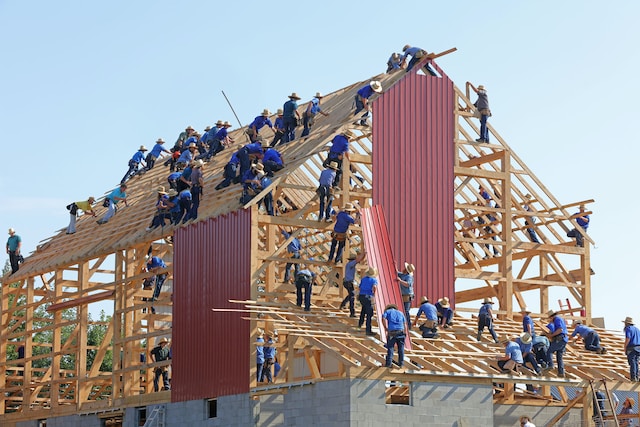- Home
- Resource Center
- Articles & Videos
- Addressing Translation Challenges of NGOs: The Potential Role of Translation Technology
8 January 2024
| by Universidad de Alcalá
Addressing Translation Challenges of NGOs: The Potential Role of Translation Technology

Society undergoes a continual evolution over time, shaped by various influential factors such as globalization, technological advancements, and changing migratory patterns in recent decades. This has underscored the growing significance of communication and information exchange in our ongoing adaptation to the evolving social landscape.
Despite the increasing popularity of translation technologies each year from both an Academia and an industry perspective, their implementation and research vary considerably across different contexts. Specifically, the multilingual requirements within the third sector, notably within NGOs engaged in humanitarian aid, have largely remained overlooked concerning the utilization of translation technology. To illustrate this, it is evident that easily accessible and shareable extensive resources very popular in the translation industry are not that common and widely used within these organizations.
Some examples of these resources are known tools such as translation memories, termbases, parallel corpora, CAT (computer-assisted translation) tools, etc. In this sector, the translation jobs are predominantly done on a voluntary basis, and the translators / volunteers are the ones compelled to create their unique and ad hoc materials depending on the translation task they are asked to perform. This situation highlights a substantial gap in leveraging translation technology effectively within this sector.
This main issue faced by NGOs nowadays is directly linked with the scarce of economic and technological resources invested in them, which makes the adaptation difficult to digitalization and improvements related to a faster communication and better quality, among others. This circumstance represents a lamentable situation within the context of NGOs, as the need of speeding up their translation deliveries and the availability of different content types, such as annual reports, in multiple languages are getting more demanded. This situation has started to play a key role for these organizations and that is why the need of integrating translation technology into their workflows is raising interest lately, since the same type of documents have to be drafted in large quantities on a yearly/monthly basis.
This need to integrate this technology into these organizations is raising interest lately and many different authors and most of them are exploring the impact of using translation memories, CAT tools, machine translation and post-editing practices in this context.
NGOs: translation and challenges
It is not possible to understand the translation needs of NGOs in migration contexts and emergency situations without wondering some aspects: what do NGOs normally translate? Is it always the same? Why do they translate it? Are there common types of texts? Thanks to the studies carried out by several authors such as Rico Perez (2020) or Tesseur (2017, 2018), we can draw some conclusions common to the questions raised.
At this point, we can state that NGOs are of different kinds. In the framework of our research, which focuses on humanitarian aid and third social sector NGOs, the organizations share several characteristics which can help us to define and analyze the types of texts they produce and which, therefore, need translation. For example, the NGOs analyzed under our research have in common their target audience: linguistic minorities in need of humanitarian aid. Therefore, we can distinguish between different types of specifically specialized and non-specialized texts: internal policy documents, press releases, economic reports, urgent actions, articles for the website, material for marketing campaigns, asylum applications, etc.
Coinciding with the above, Sánchez and Rico (2020) also group these texts into two categories: legal or health. Considering the variety of texts translated by NGOs, we can affirm that the main functions of these texts are appellative and informative, although their level of specialization may vary depending on the target audience of each specific text.
We can assume that the multilingual needs of NGOs are growing and becoming more and more necessary. Their international character, their different textual typologies and the different audiences they address highlight the need they face to streamline and professionalize their work. Here’s where the translation technology could play a key role in their workflows and could be of great help to their stakeholders – not only the benefited from the translations, but also the translators themselves who need to deliver under a lot of pressure.
As mentioned in the introduction, despite the need of implementing translation technology within this context, NGOs are still facing some challenges in this regard. In our research, we have divided these challenges into 4 different aspects:
- Lack of professional translators who are trained for this kind of translatio when there is a crisis situation and communication becomes indispensable, citizens are called upon to collaborate with anyone who can help. In most of these cases, the translators who act as a communication relay are ordinary citizens, volunteers, members of Non-Governmental Organizations (NGOs), or even members of the family or community helping those closest to them. Various studies and research in this field have shown that specific training in the field of the social third sector in translation could help to improve the quality of services provided in emergency situations.
- Huge amount of documents to be translated: translating in emergency situations and migration contexts adds the challenge of the immense amount of documents and information to be translated, as well as their different specializations, making it impossible in many cases for these organizations and institutions to meet the demand, not only with their internal resources, but also even with external ones. As a solution, some authors have proposed the use of translation technology to address this challenge, yet as mentioned, not all translators and especially not all organizations and institutions, have access to this technology, which leads us to the next point.
- Scarcity of (technological and economical)resources: this has been already mentioned but it is worthy to highlight it. Once again, many authors and even translators themselves are reporting this problem, pointing out that part of the budget should be earmarked for translation and intercultural communication, but it is not – and without economical resources, there are no technological ones either.
- Linguistic policies are not included in the scope of SDGs: Sustainable Development Goals described by the UN do not include linguistic aspects and, consequently, do not include aspects related to translation. The achievement of the Sustainable Development Goals is an ambitious intercultural and multilingual venture, in which countries around the world are working together, so it should include the central role of translation and interpreting in bringing this global mission to a successful end, and also it would raise awareness globally.
Conclusion
Non-Governmental Organizations (NGOs) belonging to the third social sector are a global phenomenon that act as international agents, breaking down linguistic and cultural barriers when national boundaries are crossed. The humanitarian aid provided by NGOs is growing day by day to adapt to the needs of society as it evolves, to the point of needing more resources to be able to continue helping in these contexts.
The presentation of the different shortcomings faced by NGOs in the field of translation by different experts has highlighted the difficulty of adopting uniform and coherent practices that are common to all organizations belonging to the third social sector. These shortcomings include:
1) the lack of professional translators combined with an excess of volunteer translators;
2) the immense amount of information that needs to be translated in a very short period of time;
3) the scarcity of economic resources and budgets dedicated to translation;
4) the reduced visibility in international agendas, such as the 2030 Agenda.
A potential resolution to these challenges involves the proposed use of translation technology, a domain well-explored and established within the commercial translation sector. Presently, many commercial entities harness translation technology to cut costs and streamline workflow implementation. While NGOs have partially integrated diverse translation software and support tools like translation memories or terminology bases into their operations, this implementation lacks uniformity.
However, machine translation and post-editing are not equally embraced by NGOs for several reasons, primarily due to a lack of accessible information and resources to make extensive use of them. The surge in demand for such technology has revealed the sector's claim that these third social sector organizations could benefit enormously from this technology: both the translators, who would see their work streamlined, and the beneficiaries, who would see their demands met more promptly and adaptively.
Do you want to contribute with an article, a blog post or a webinar?
We’re always on the lookout for informative, useful and well-researched content relative to our industry.

Cristina Cano Fernández
I've been working as a Machine Translation Specialist during the past two years. Also, I'm a PhD Student on the machine translation sector. I'm lucky to work on the field that I love.


